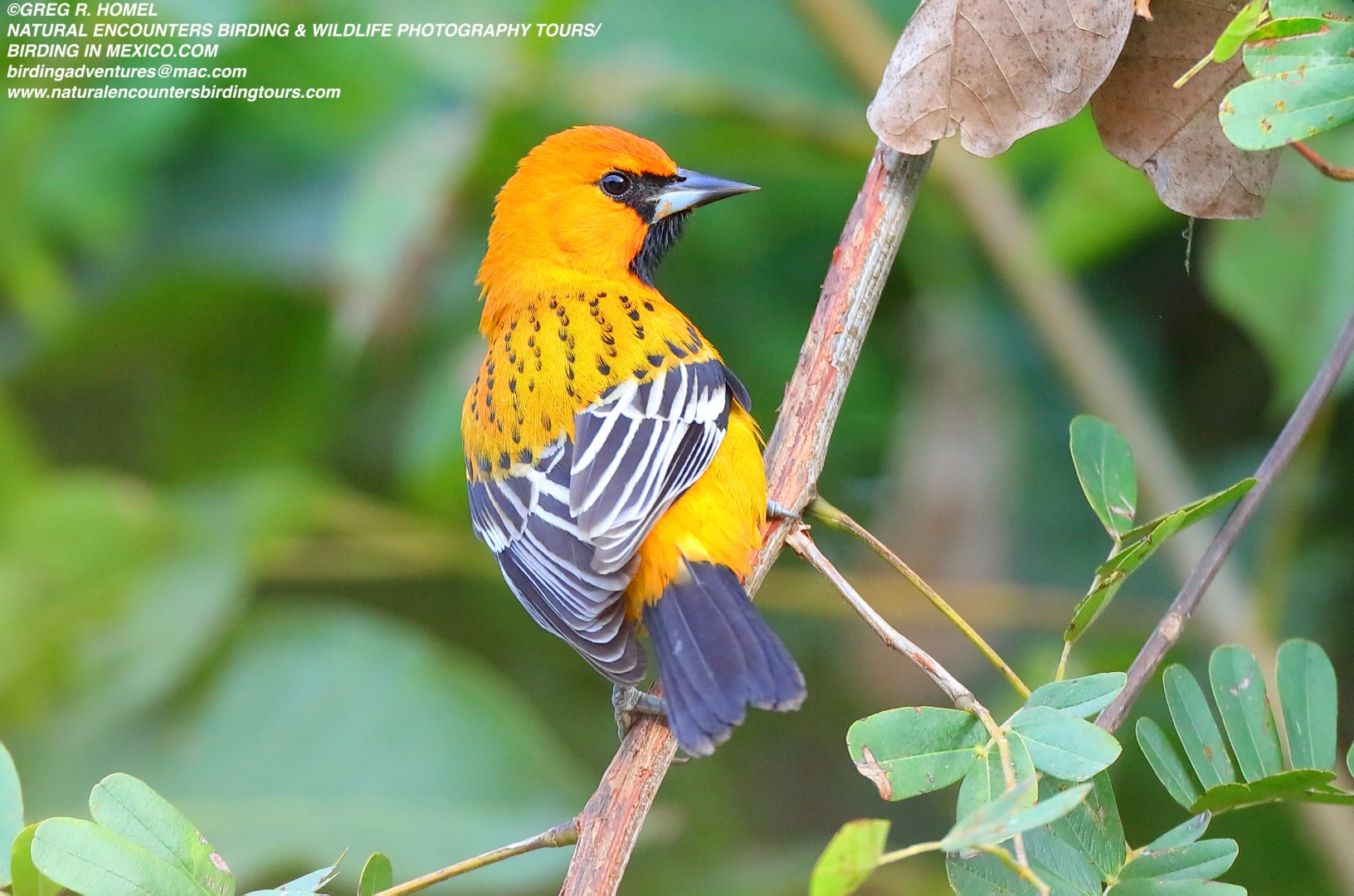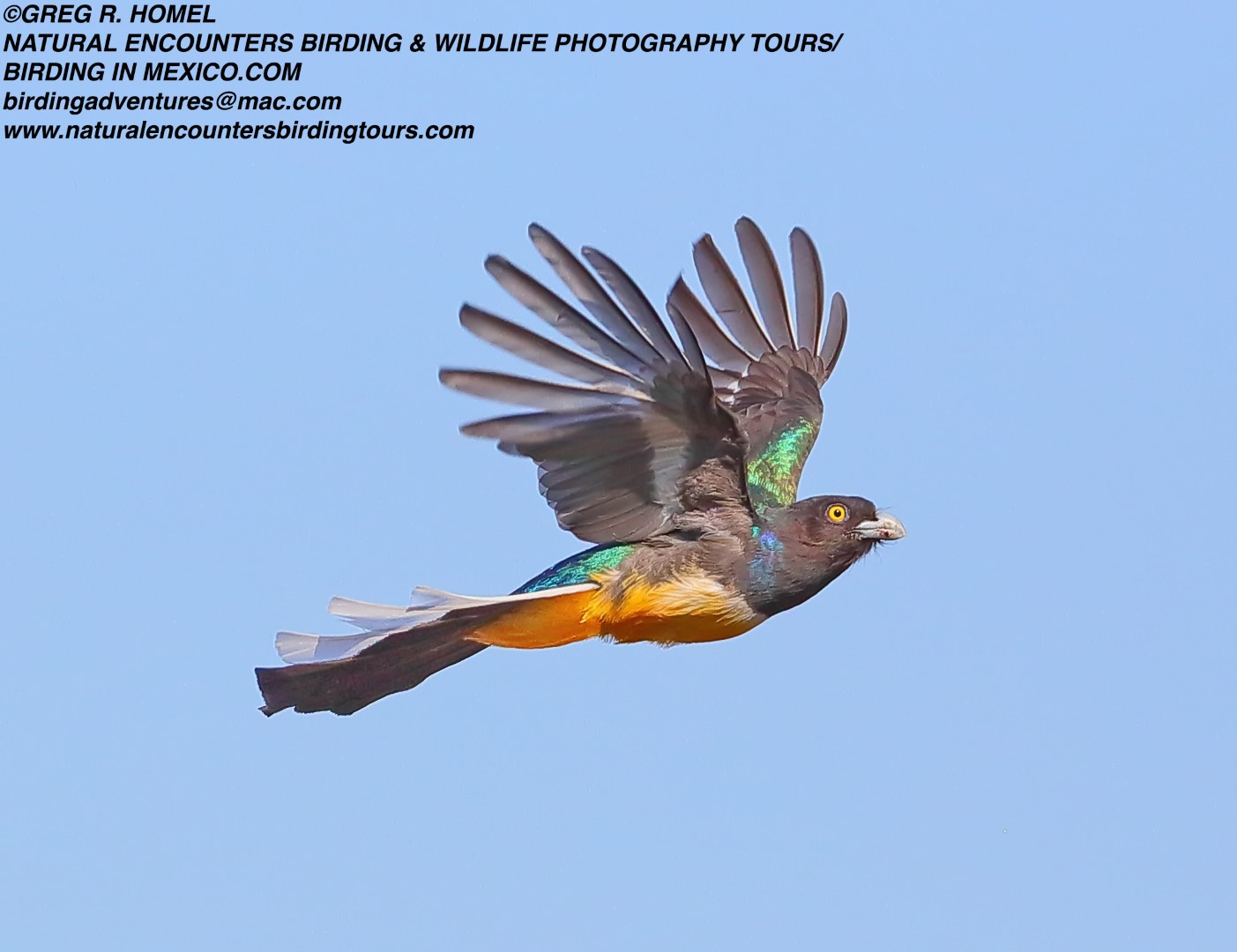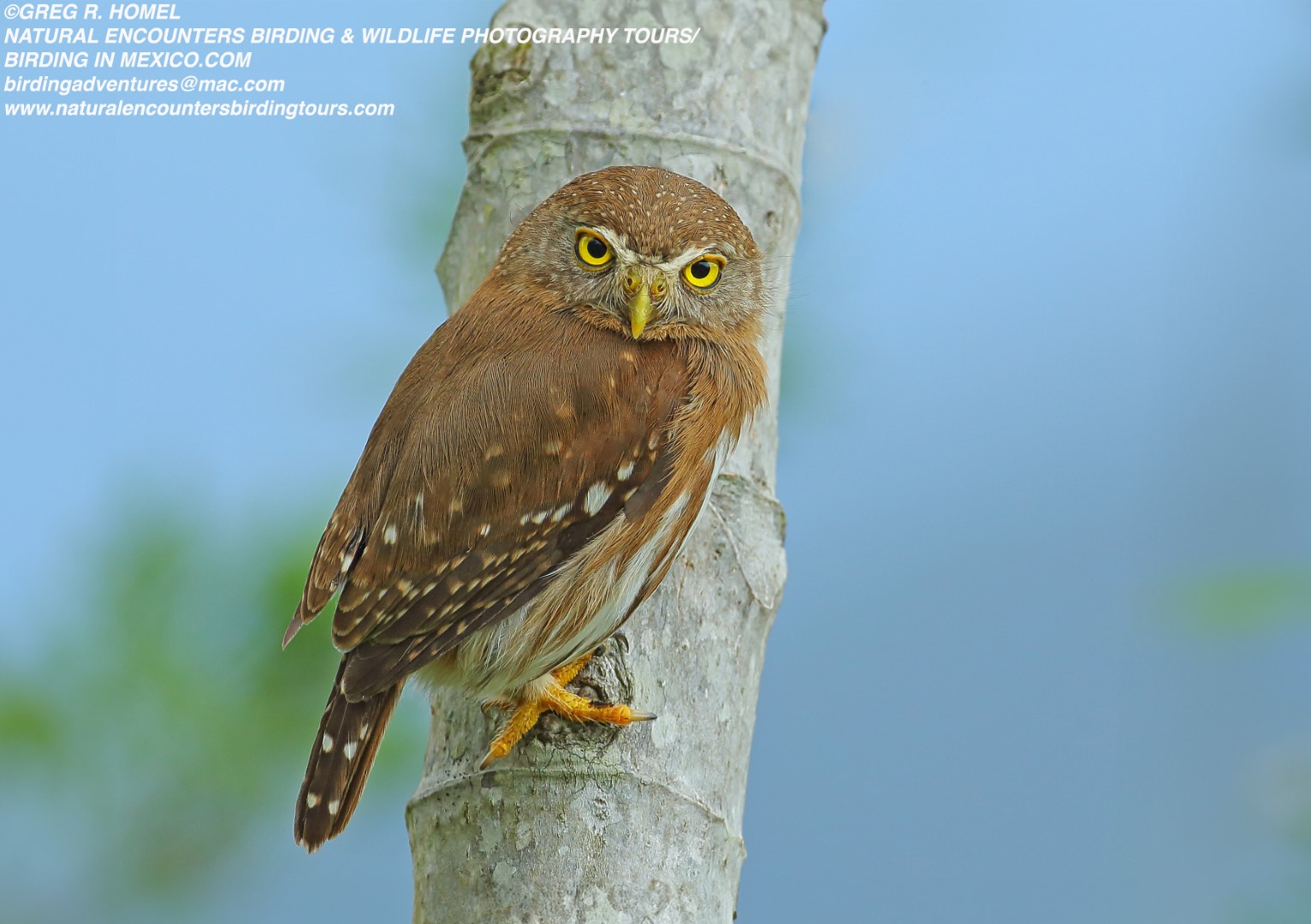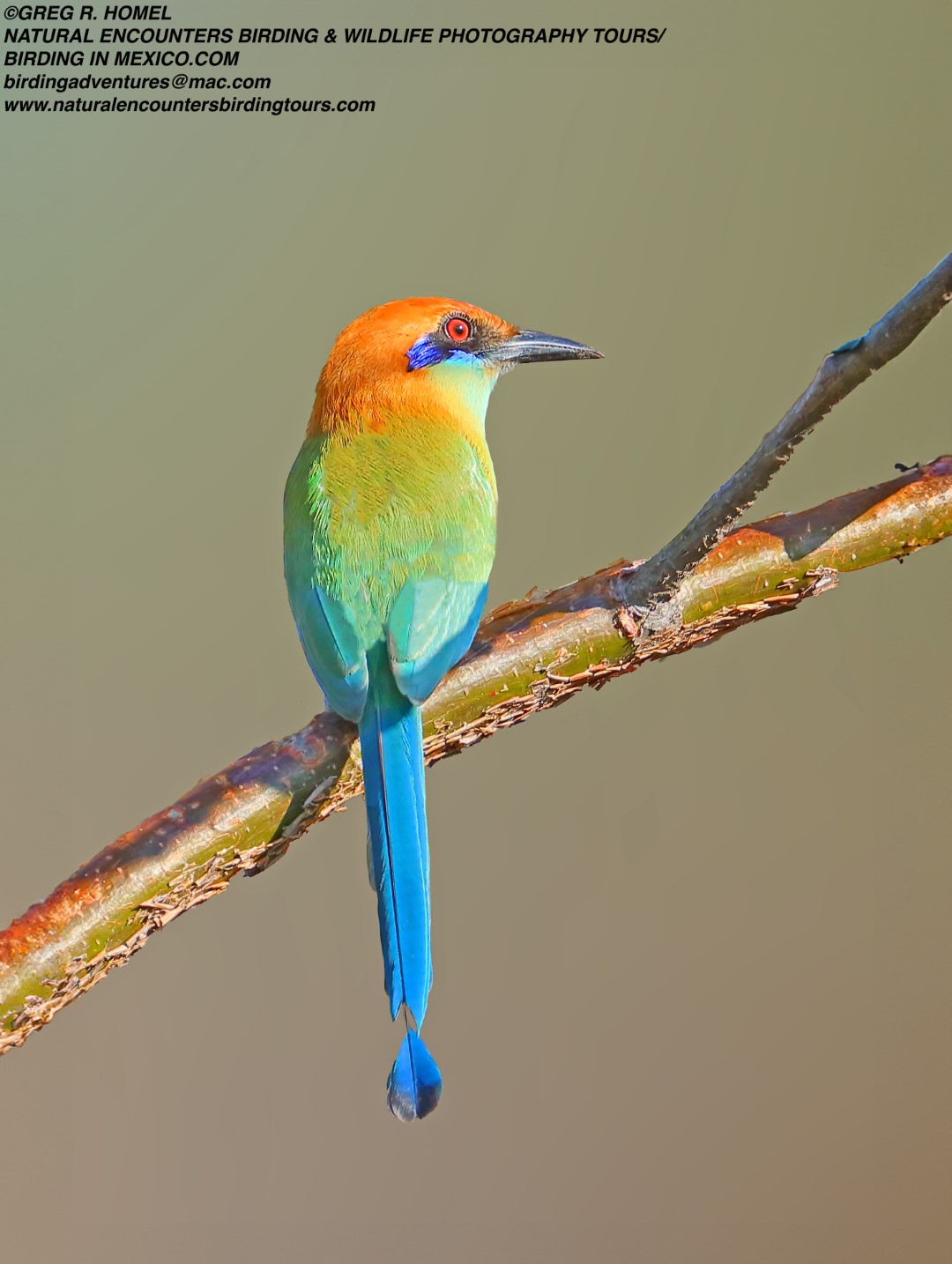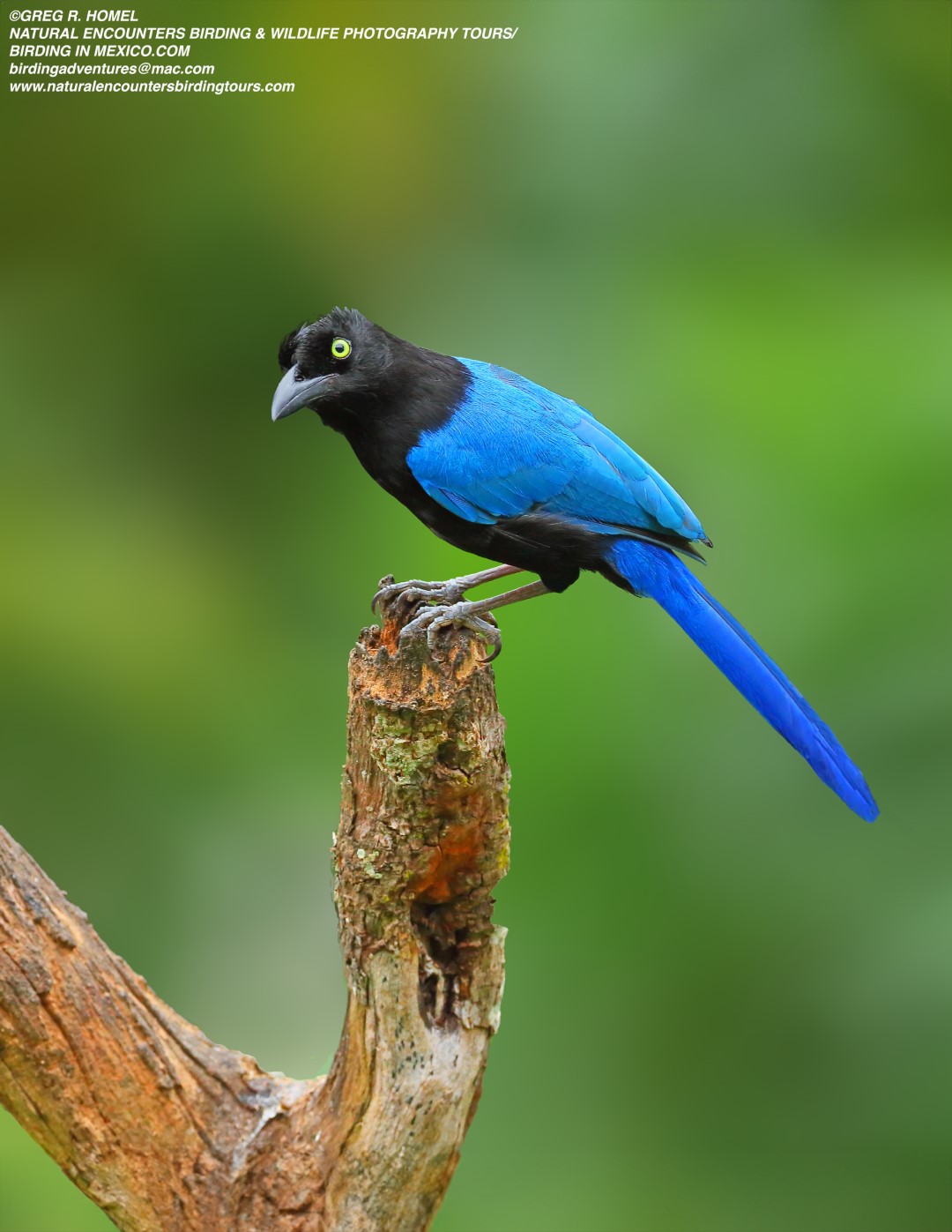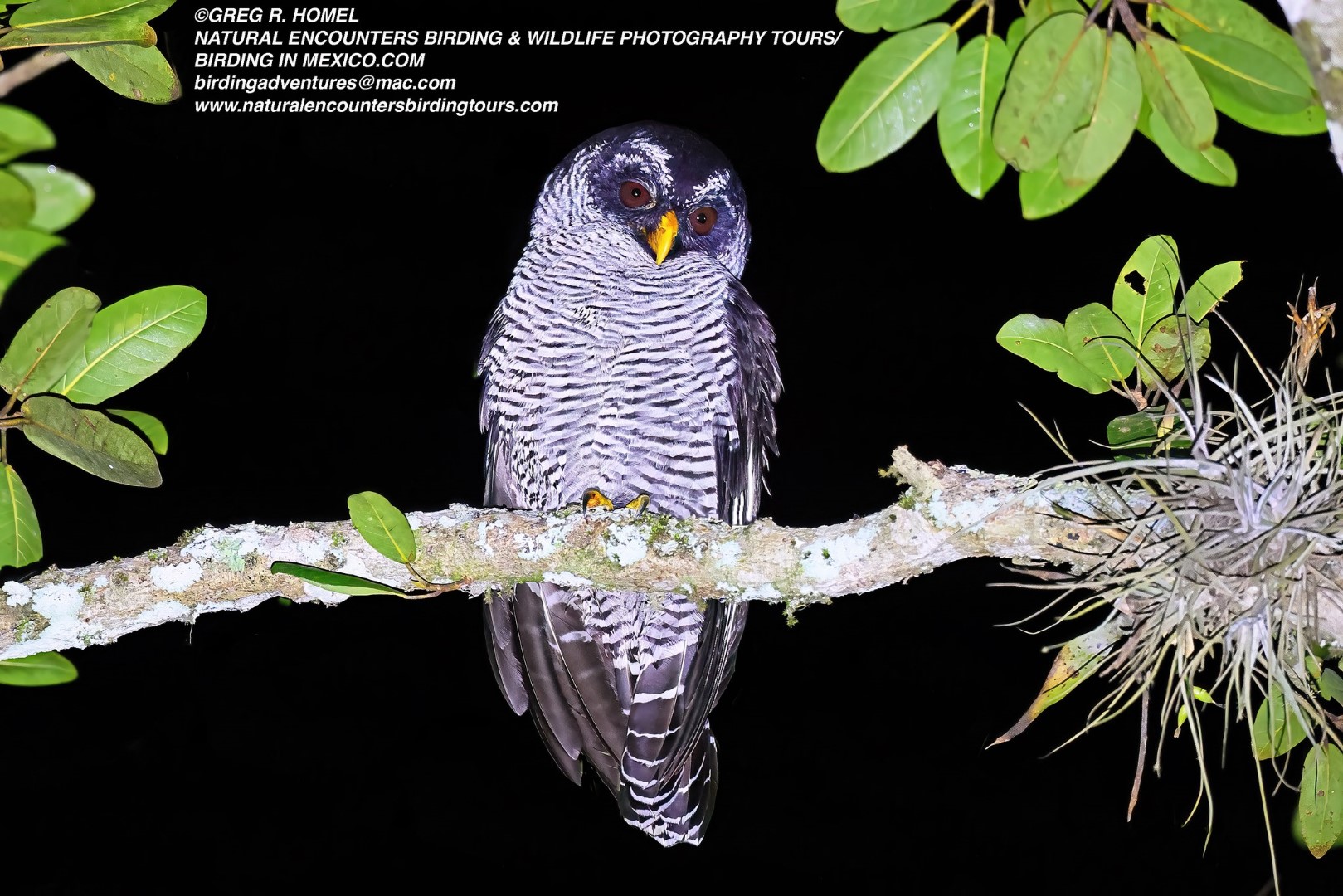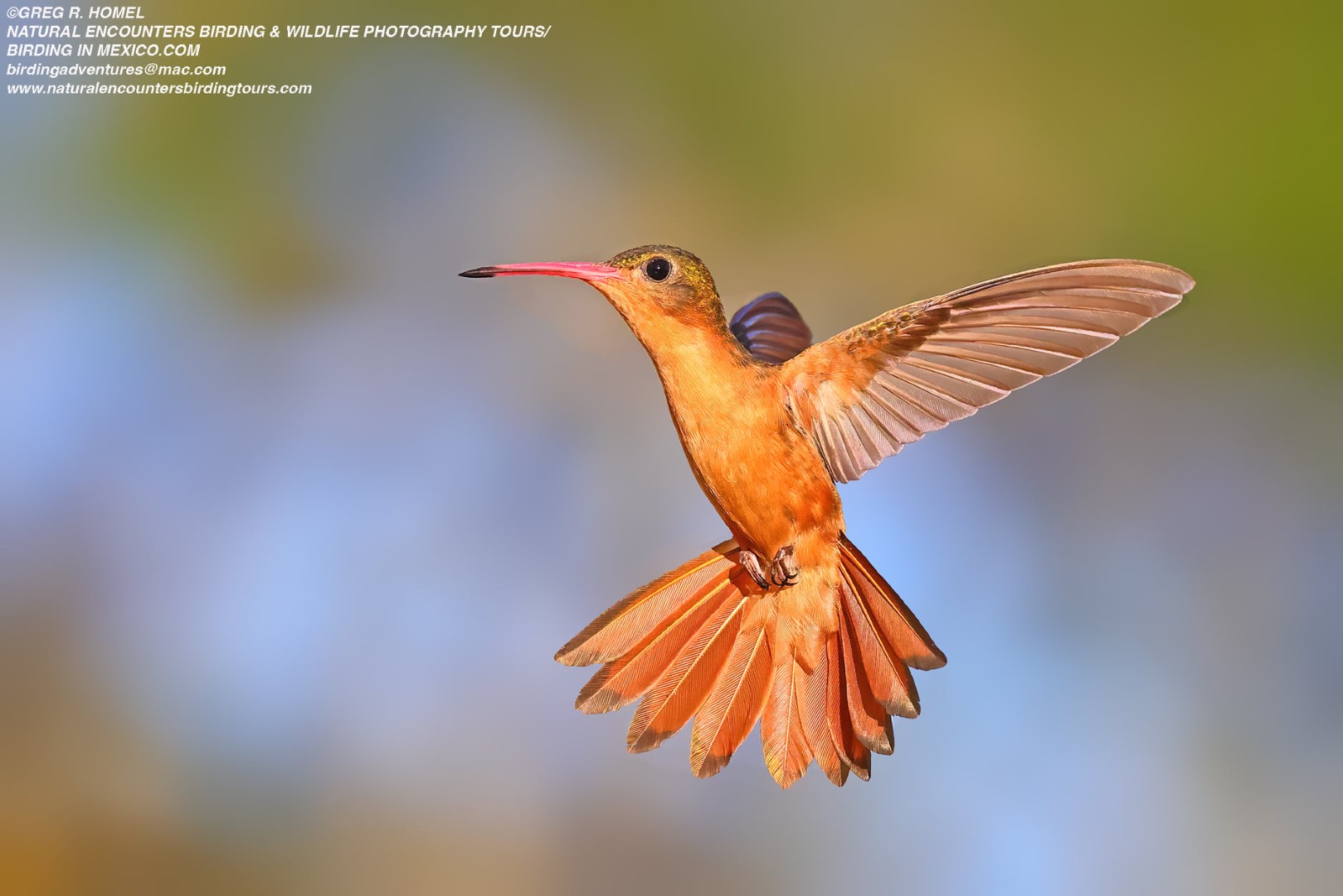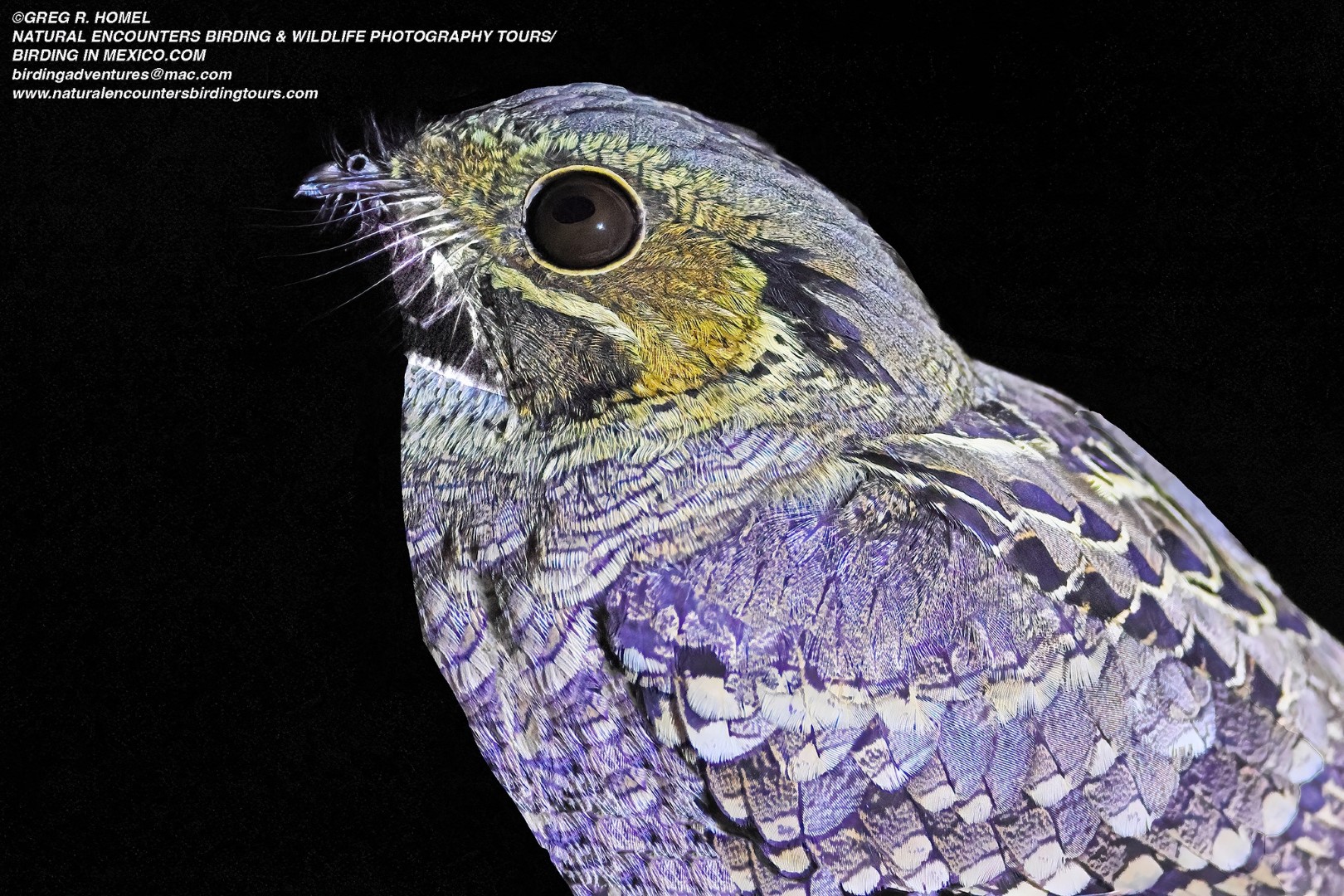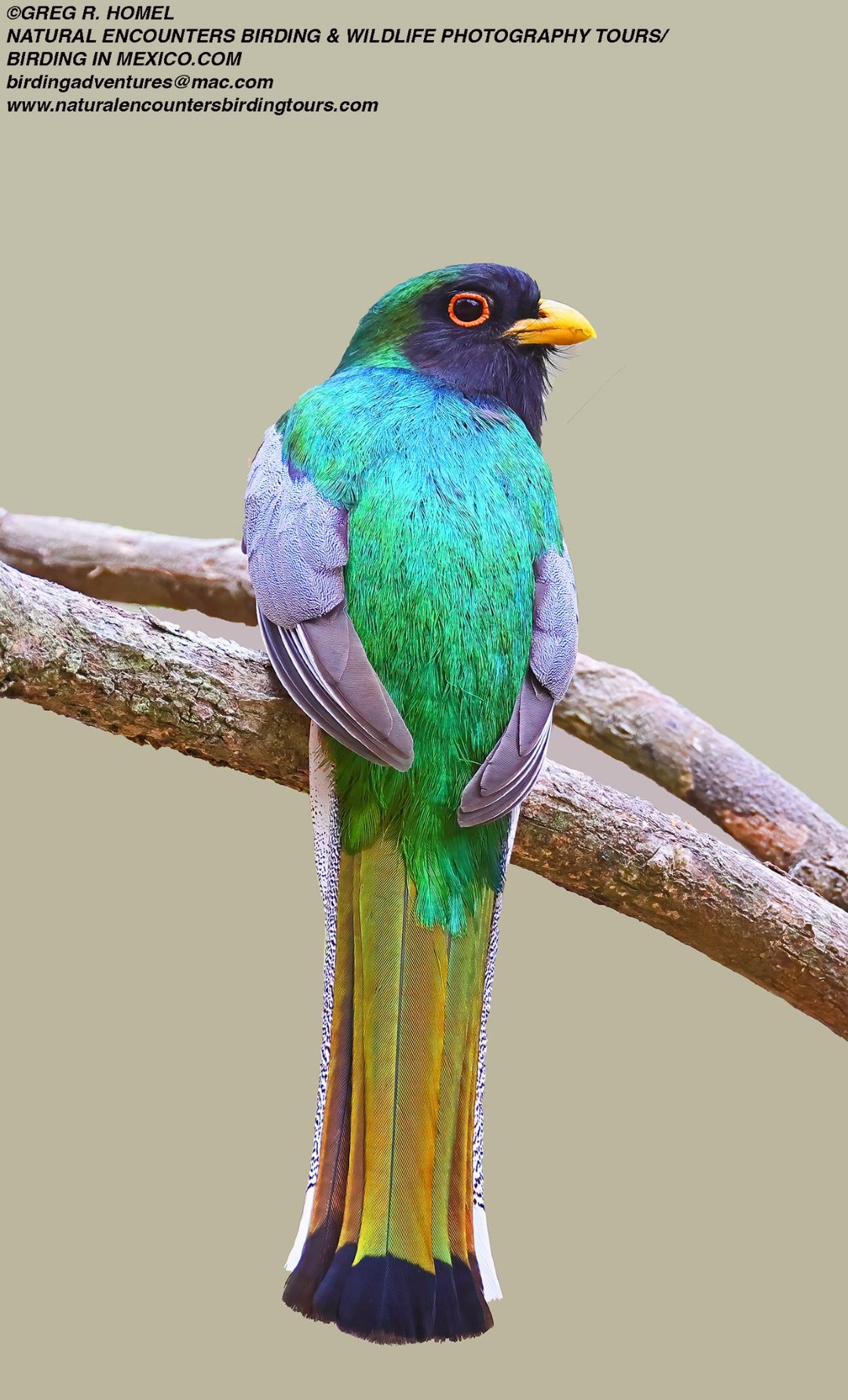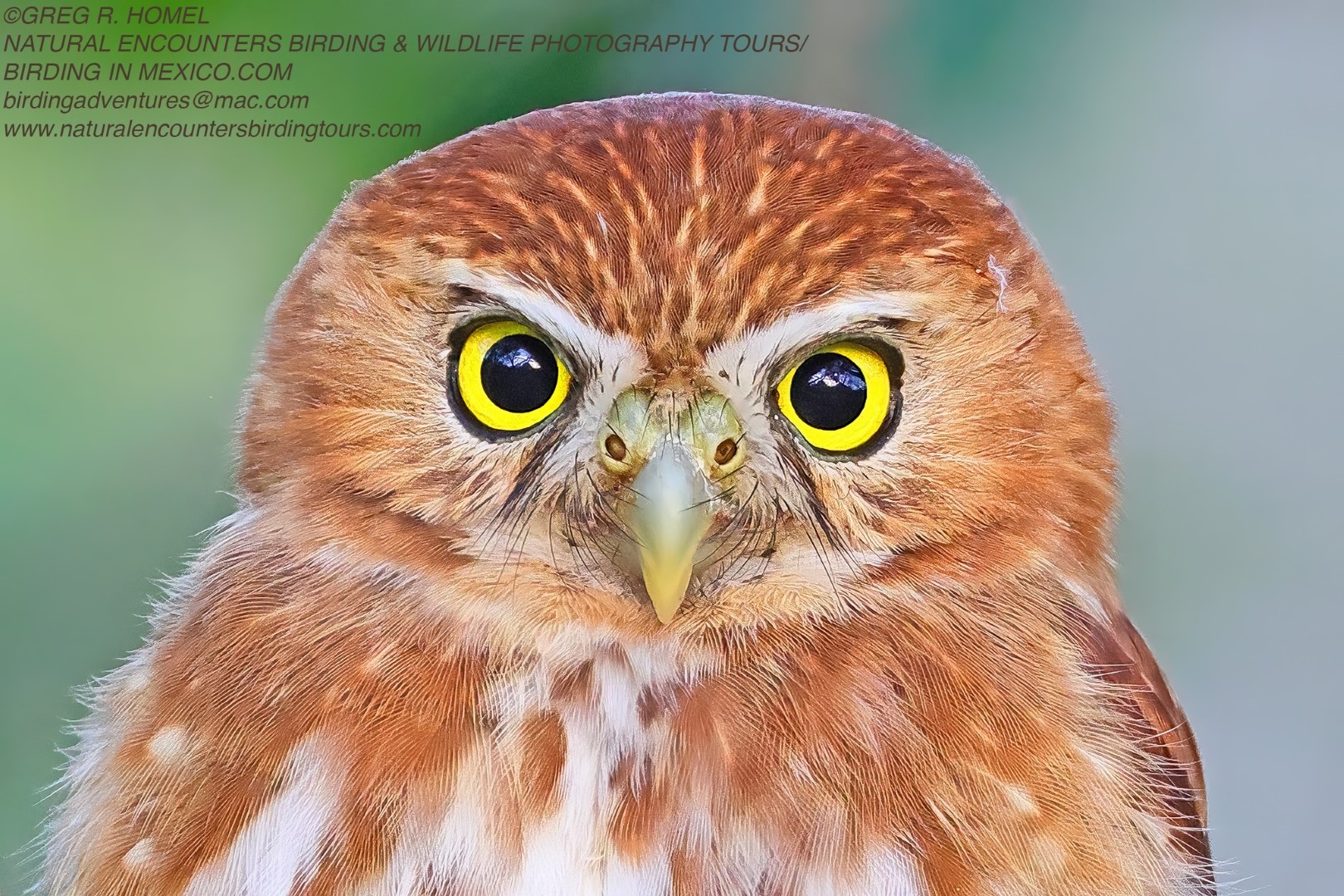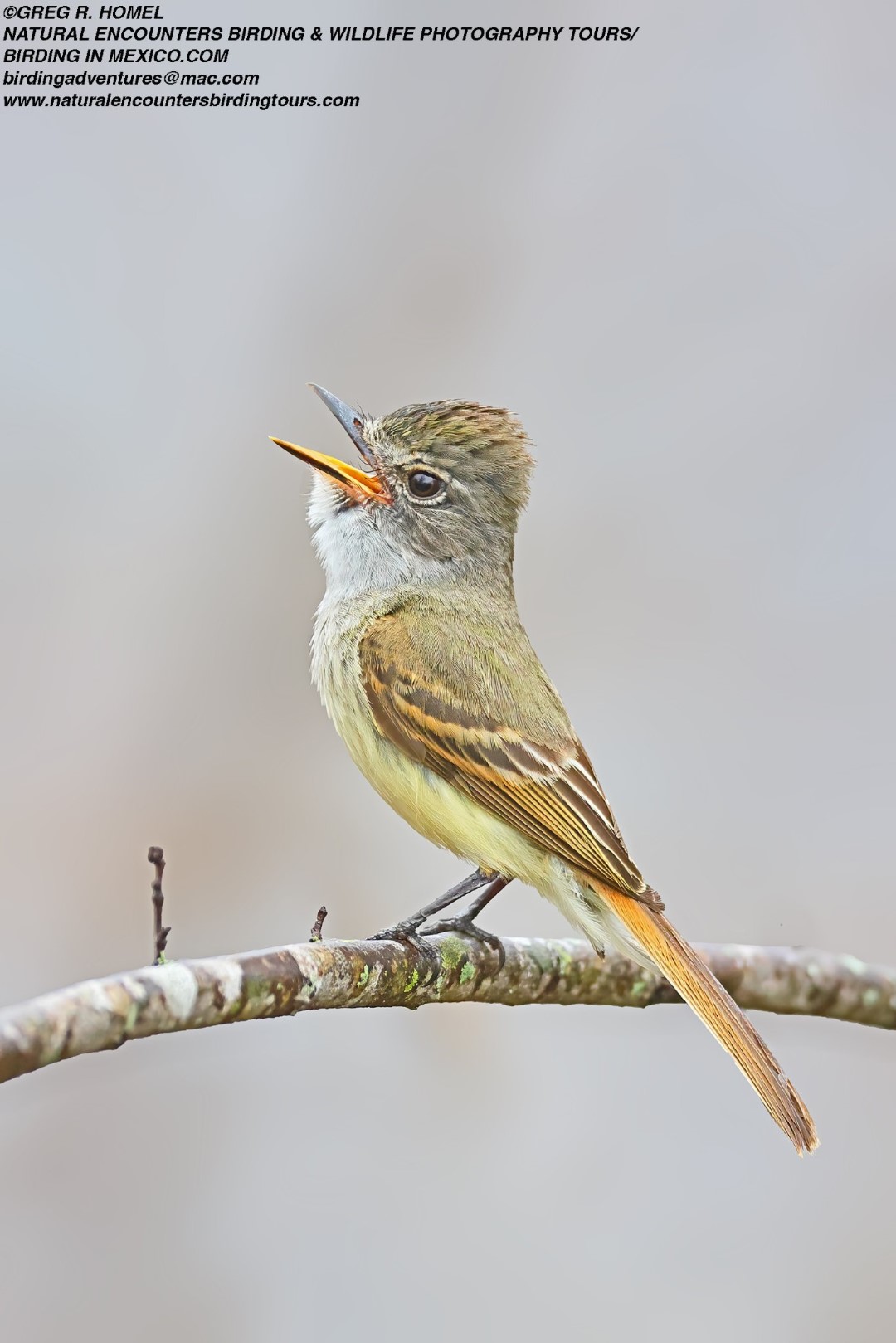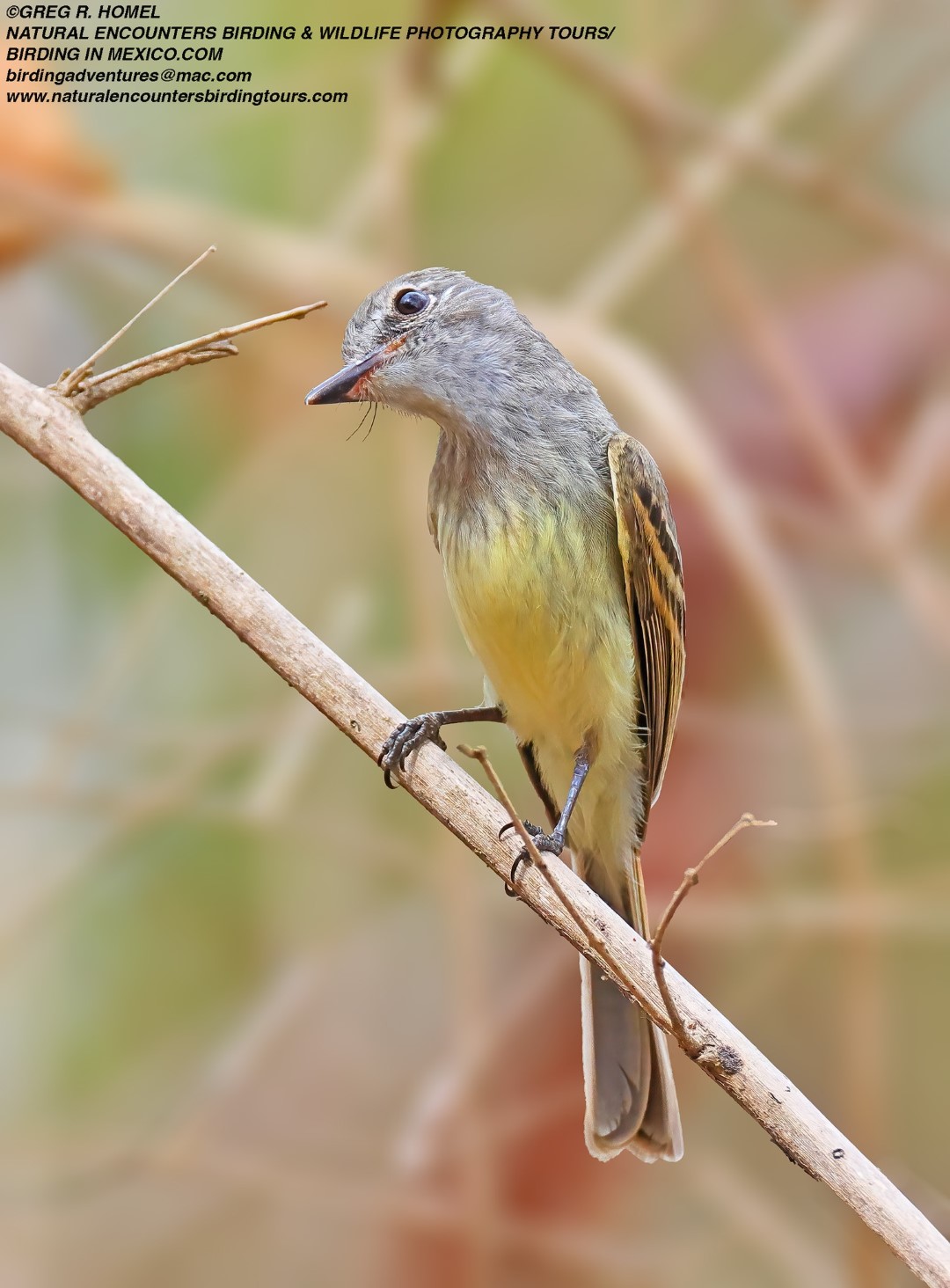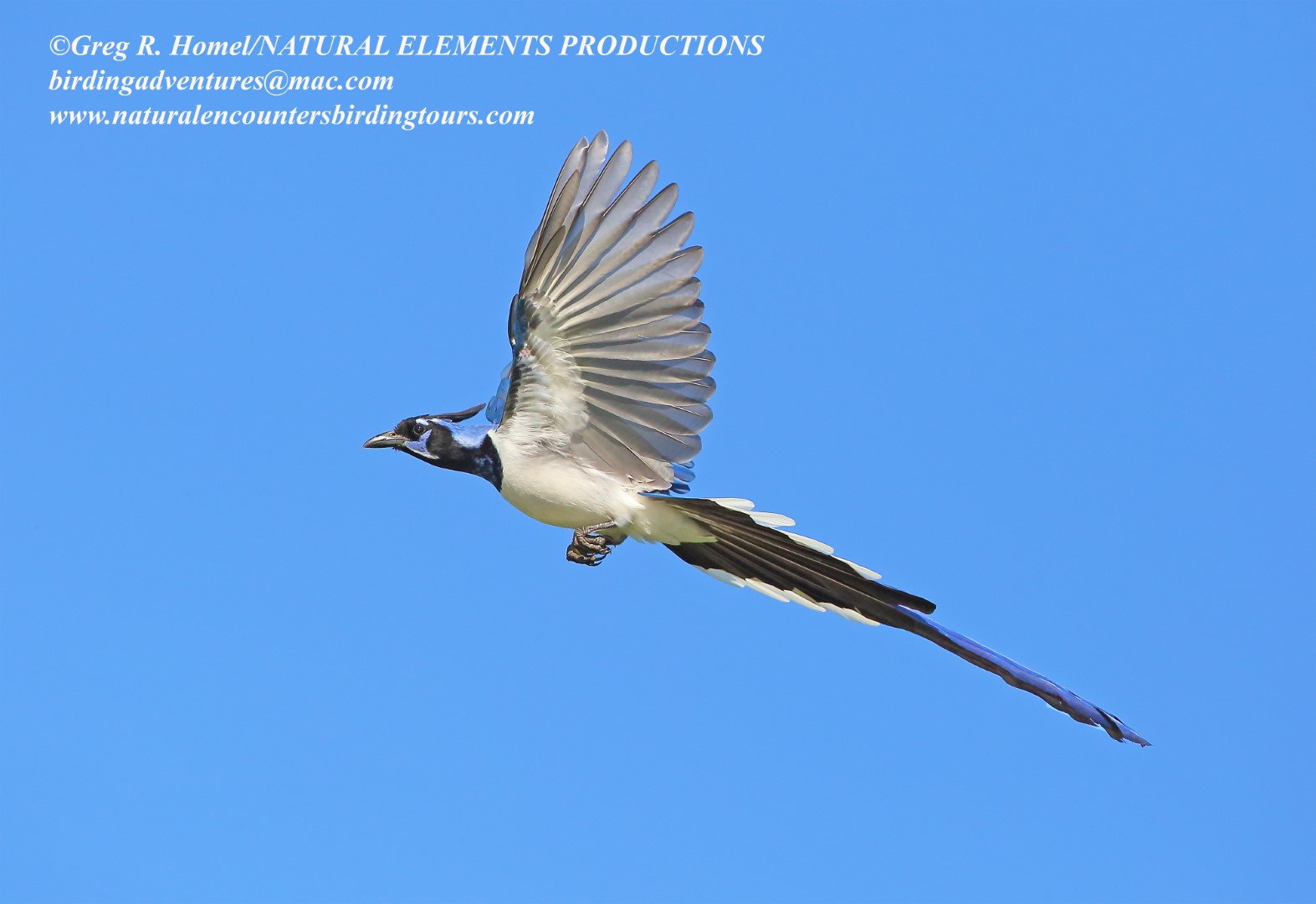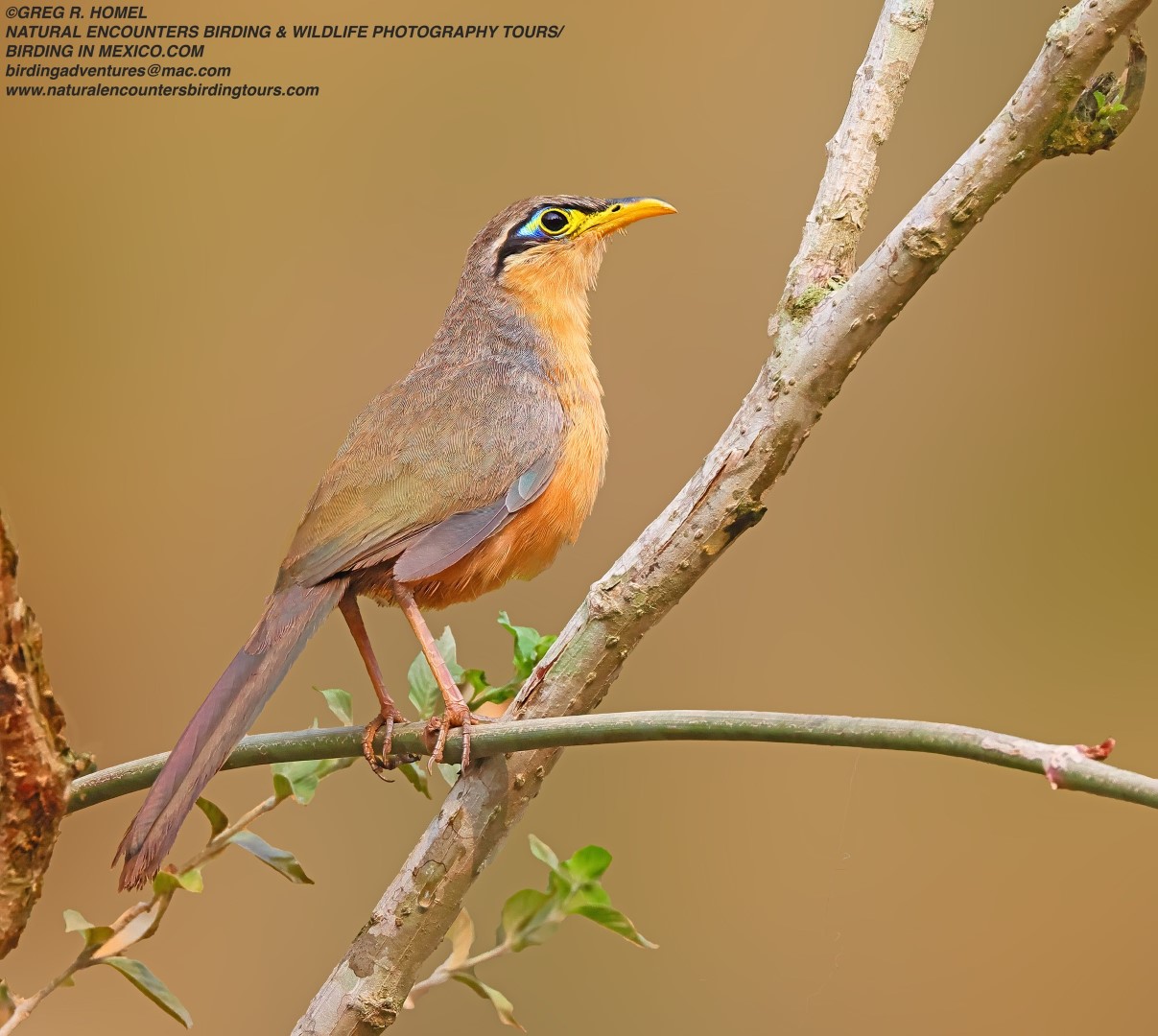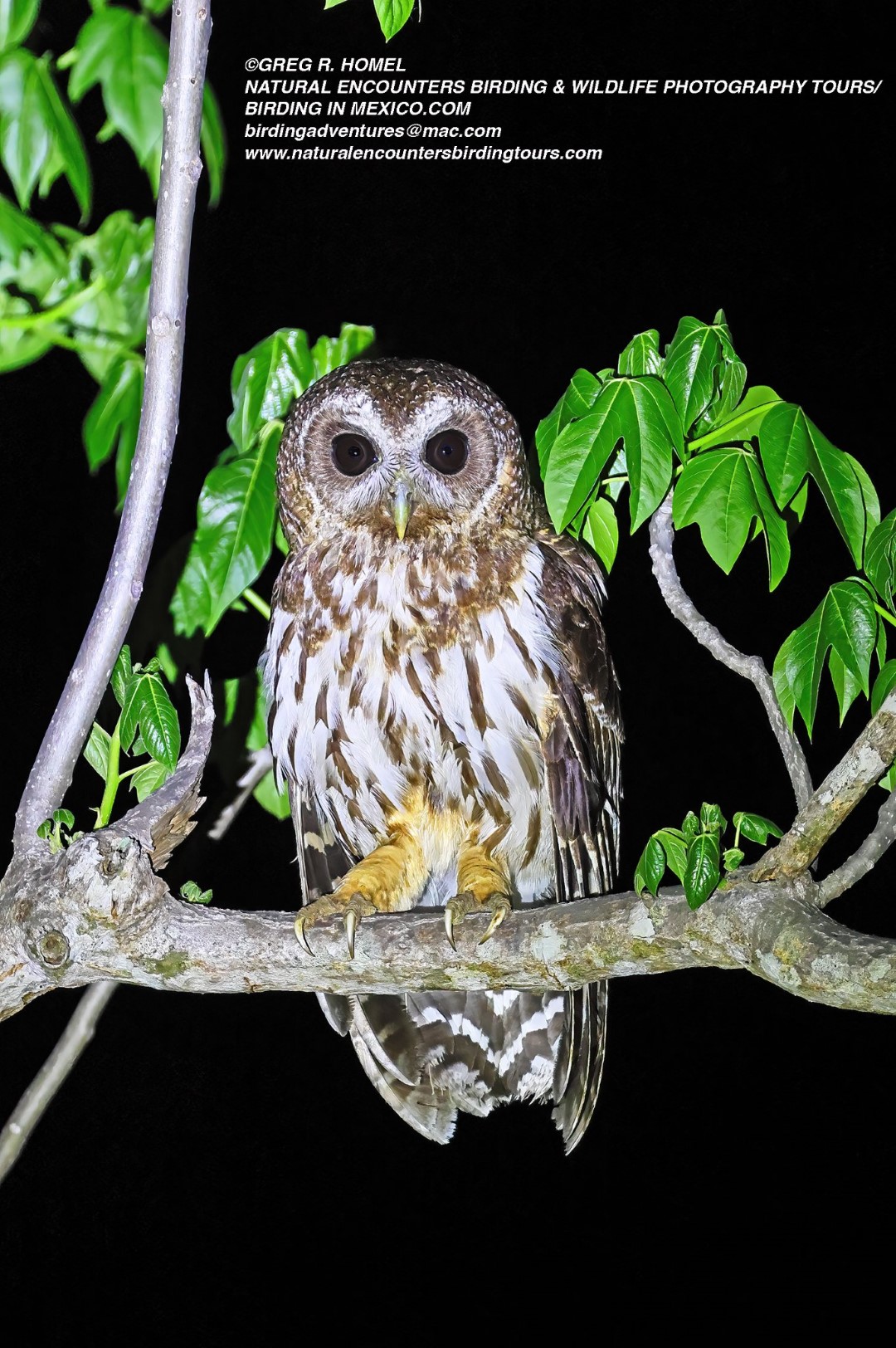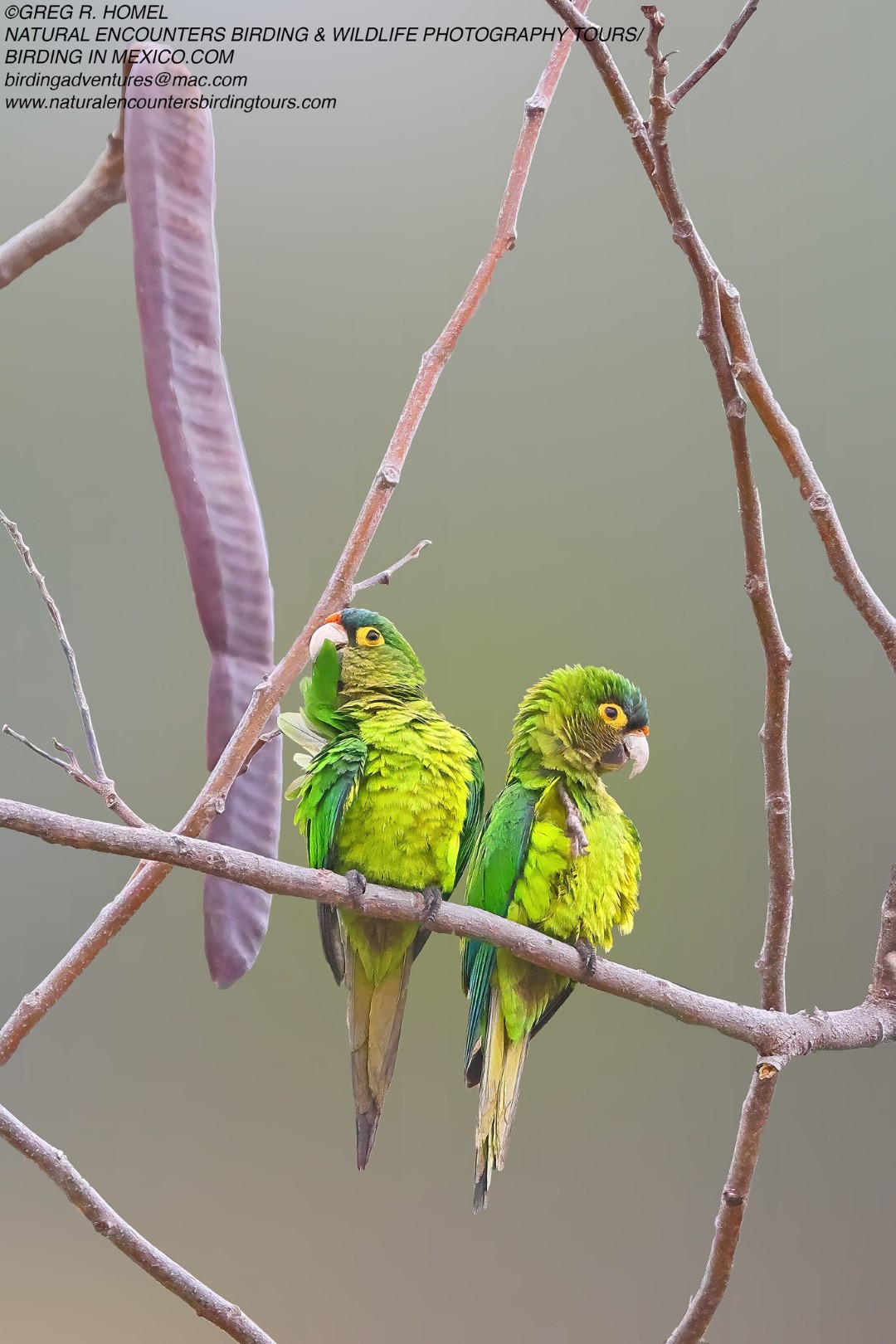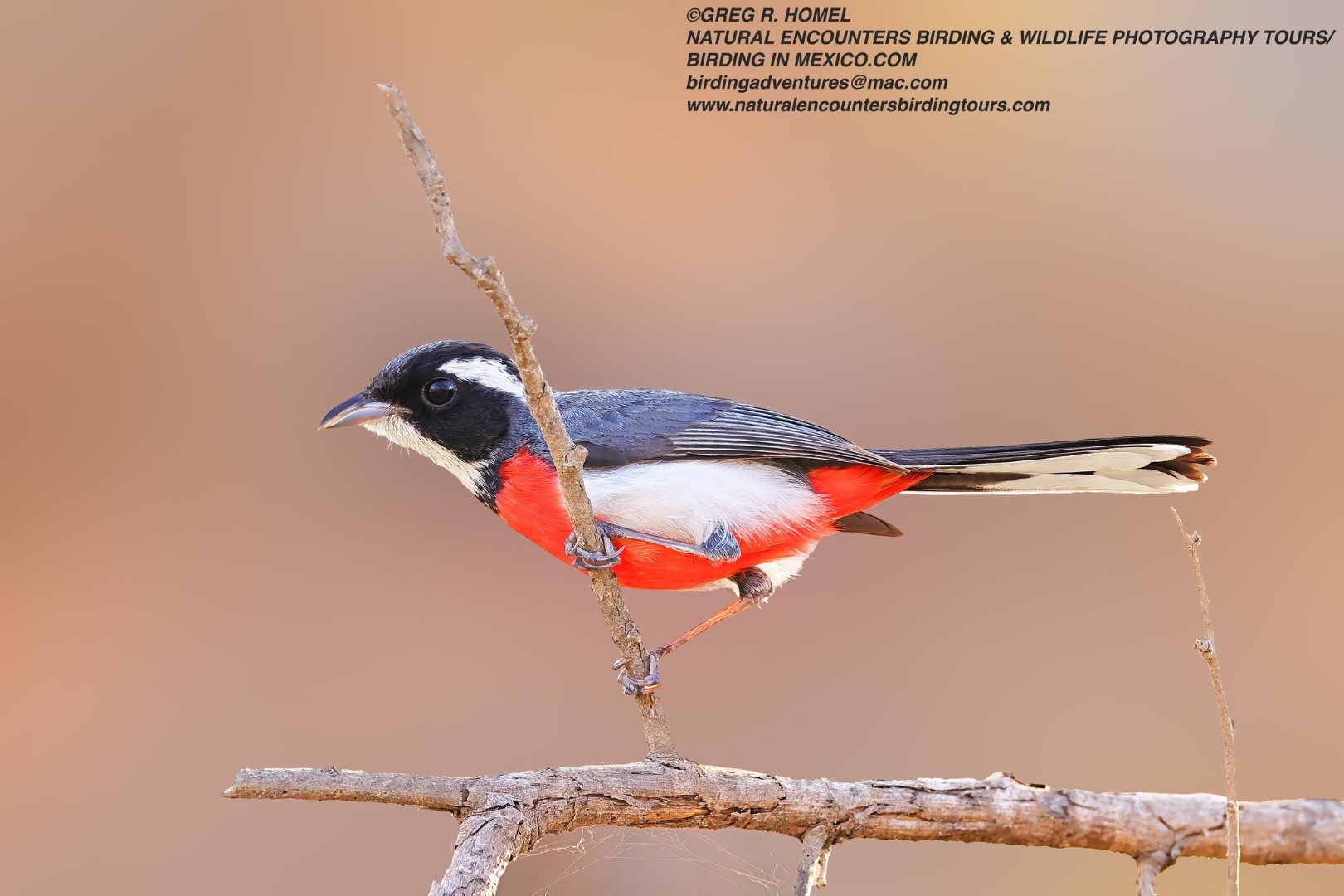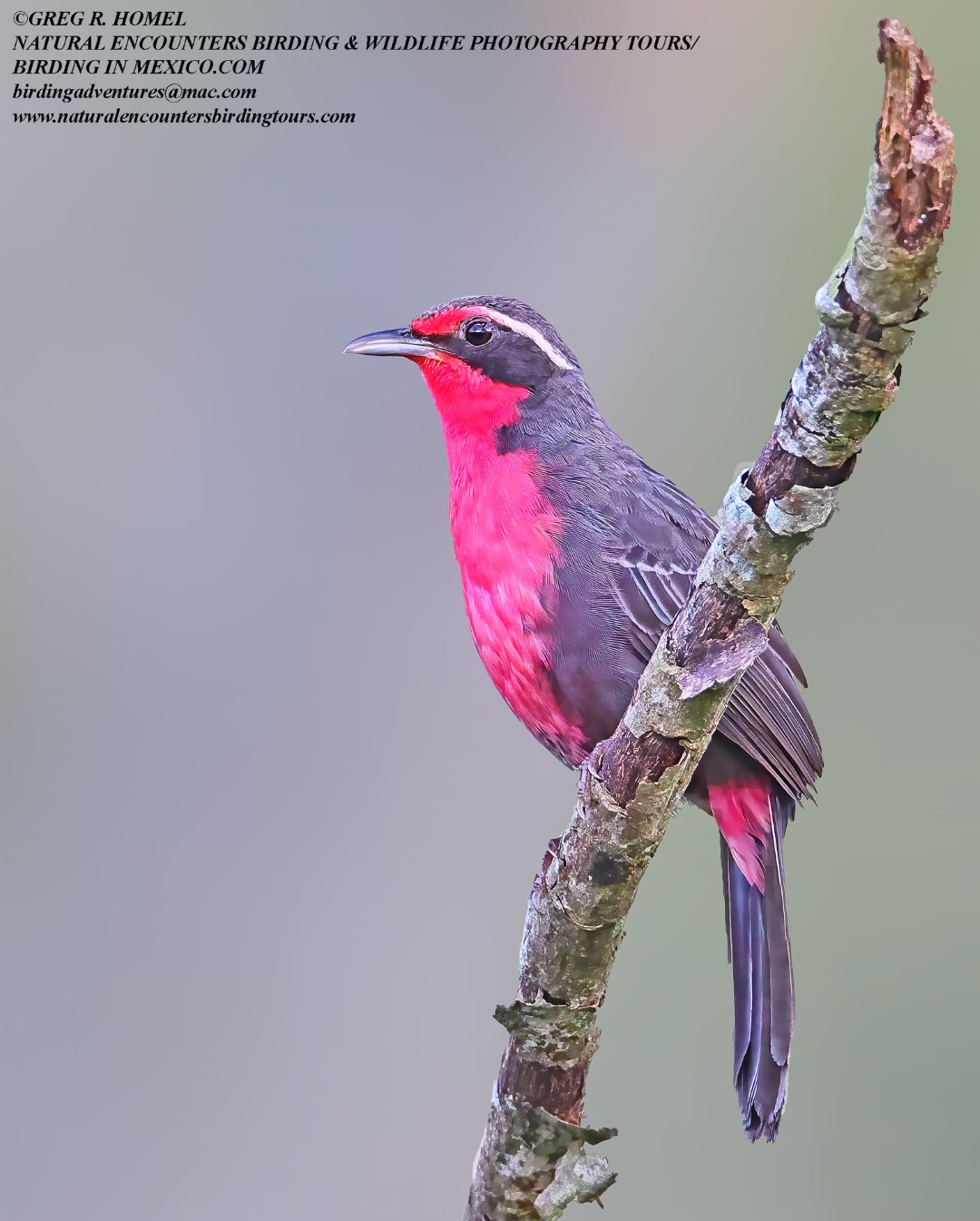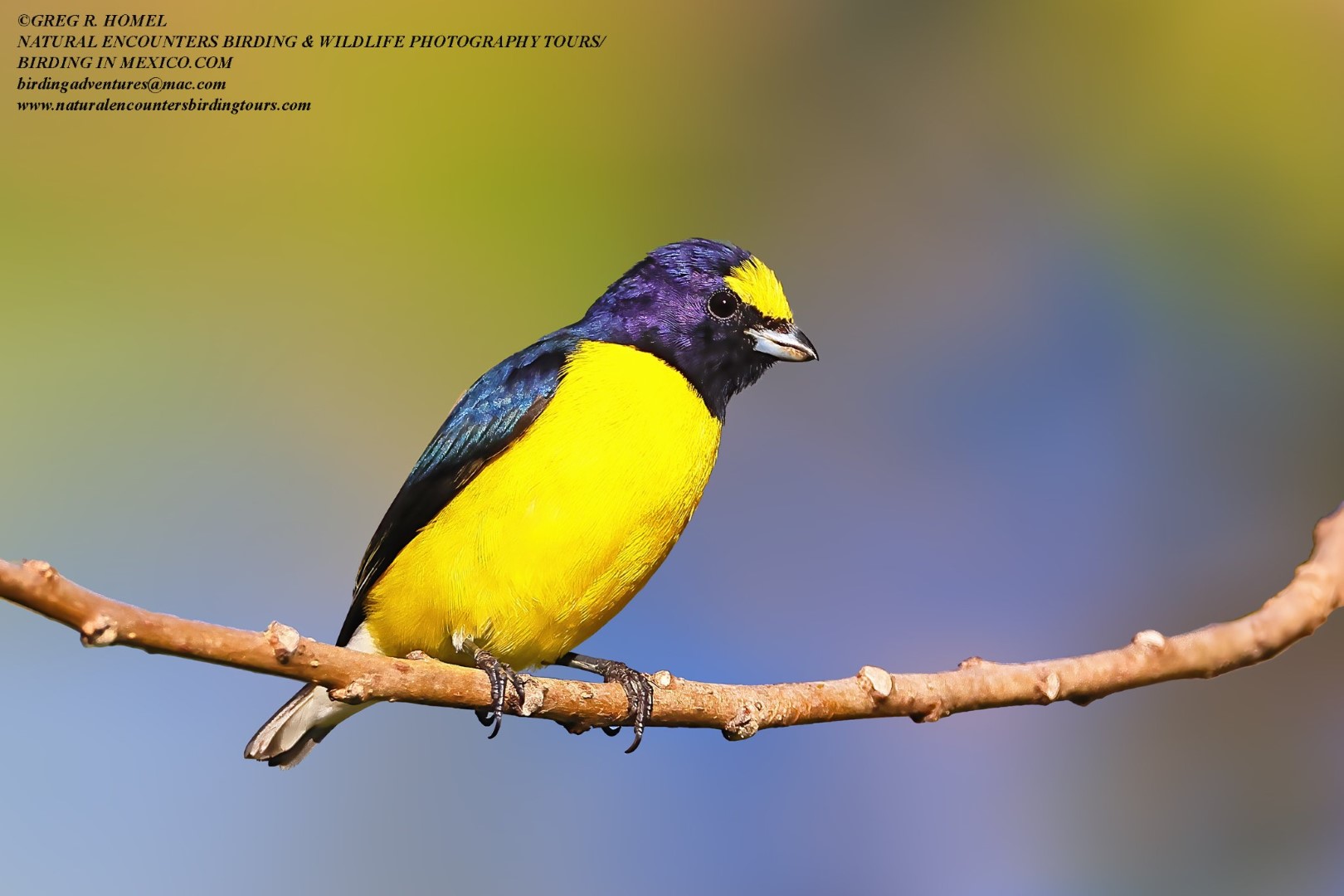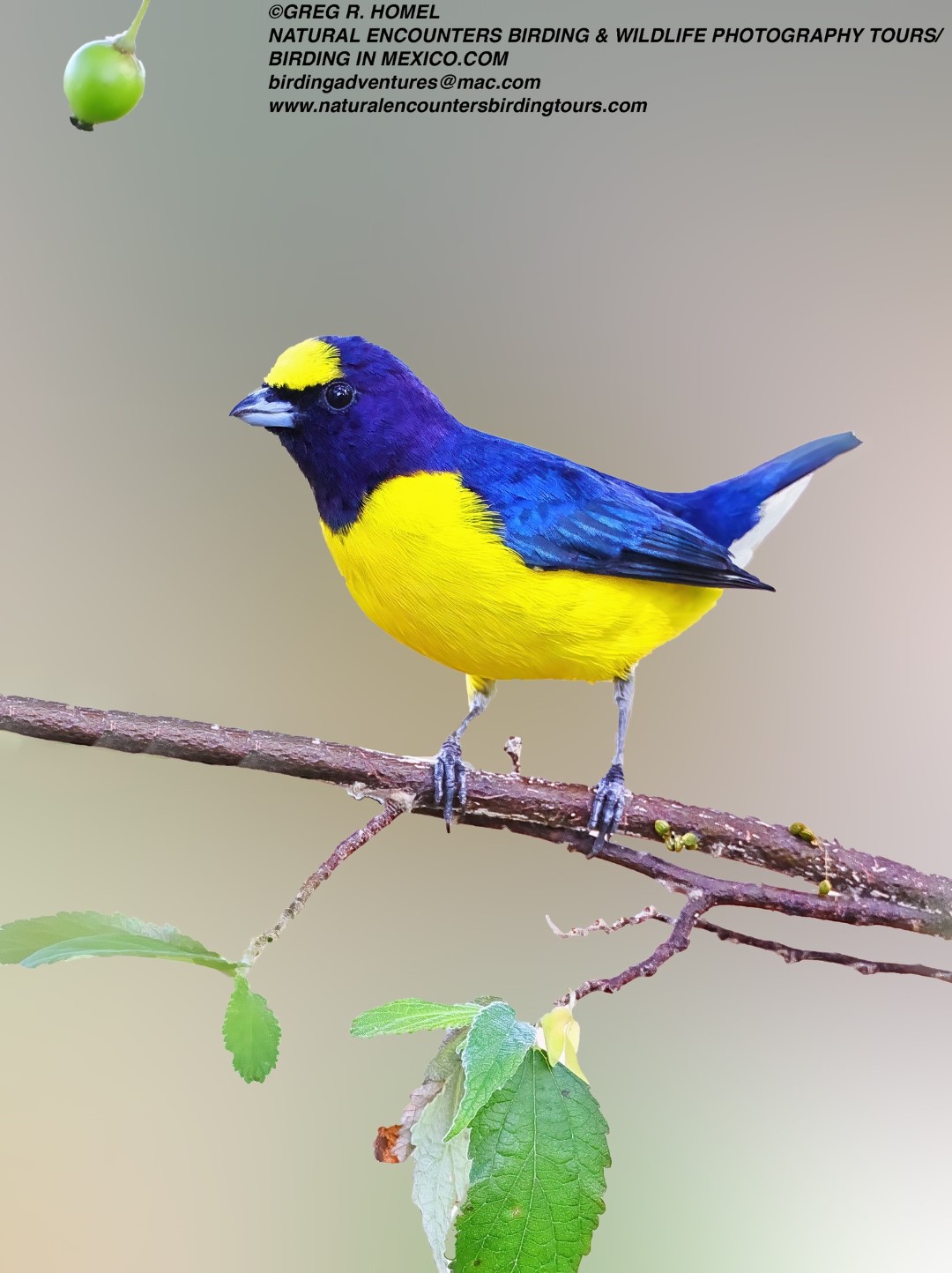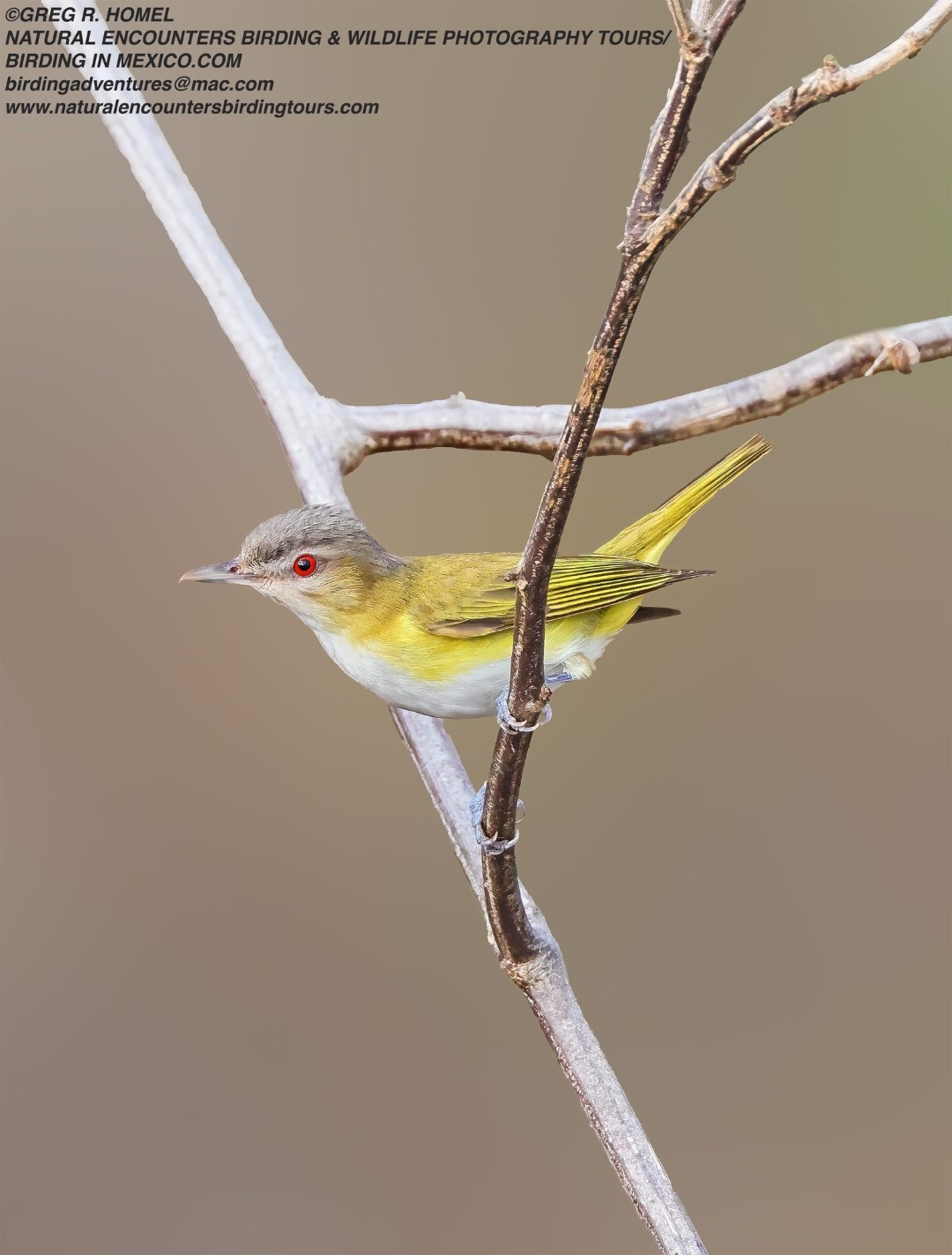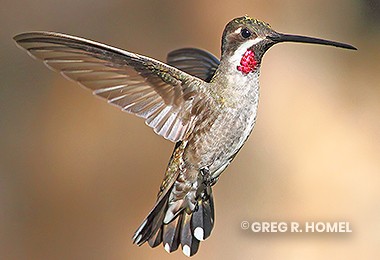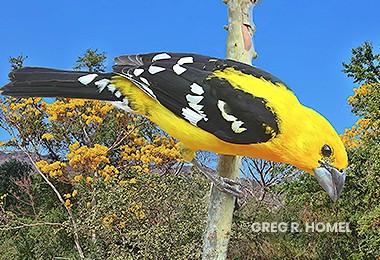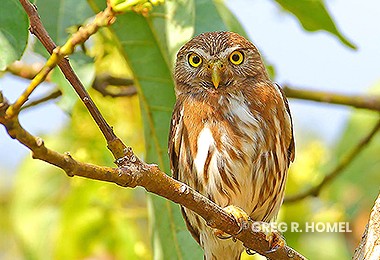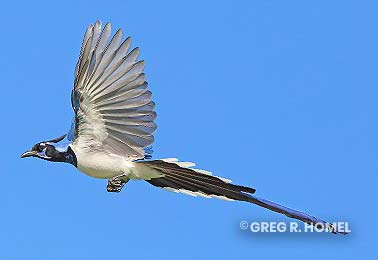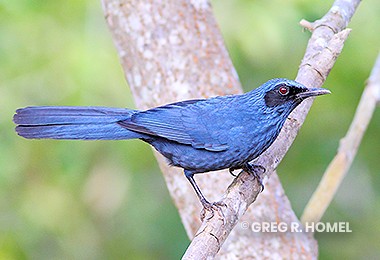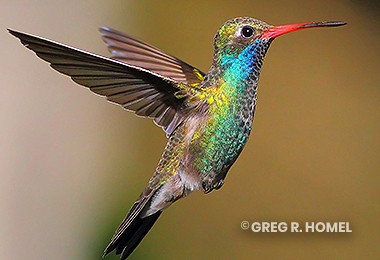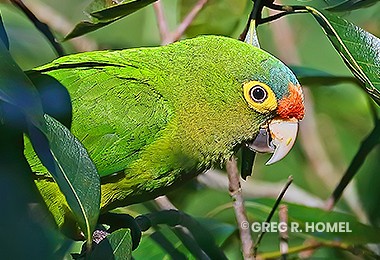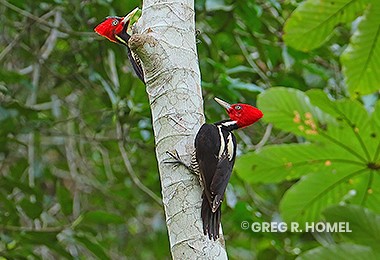Birding Puerto Vallarta’s Wild Side
Birds to Watch: 186
Location: Puerto Vallarta » Jalisco
GPS: 20.706737” / -105.137446
Mirador Mojoneras to Rancho Las Vegas Birds to watch 186 including Jalisco’s only known population of Black-and-White Owls
So close and yet so wild—this scenic, incredibly bird rich excursion will have you birding to your heart’s content in a beautiful, tropical wilderness setting… beginning just 20-minutes from Downtown Puerto Vallarta (please see map).
It’s a birding national park in the making, replete with a ranch-style restaurant on an authentic working rancho that has converted to ecotourism, set in the backcountry:-)


Tour Description
Endemics galore: The area rocks from a birding standpoint… with Puerto Vallarta’s most accessible and robust populations of beautiful regional endemics such as both Rufous-bellied (in the lowlands) and West Mexican (in the uplands) chachalacas; Elegant Quail; Golden-crowned Emerald; Colima Pygmy-Owl; Citreoline Trogon; Golden-cheeked Woodpecker; nesting Lilac-crowned Parrot and Mexican Parrotlet; Flammulated Flycatcher (common and vocal during the spring and summer months); Golden Vireo; Black-throated Magpie-Jay and San Blas Jay; Happy and Sinaloa wrens; Blue Mockingbird; Rufous-backed Robin; West Mexican Euphonia; Rusty-crowned Ground-Sparrow; and Red-breasted Chat… the latter surprisingly vocal and common during the spring and summer months.
A Cuckoo Paradise: The region of Mirador Las Mojoneras to Rancho Las Vegas is also far and away Puerto Vallarta’s best locality to, with luck, actually see (not just hear) Lesser Ground-Cuckoos… which are joined by resident Squirrel and summering Mangrove cuckoo’s in season.
Uncommonly Common: The early bird catches the worm! We get our clients out to this beautiful natural enclave early in the morning when some amazingly uncommon birds are surprisingly common. For instance, during the crepuscular hours it is not unusual to see and hear flocks of majestic Military Macaws wheeling and screeching in the skies. The sizable and vocal Crested Guan can be seen in the more remote regions beyond the turnoff for Rancho Las Vegas while Russet-crowned Motmot and Elegant Trogon are both common in the region, especially during the spring and summer months when they vocalize. Large woodpeckers grace the scenes here, with both Lineated and Pale-billed woodpeckers tantalizing visitors at this time of day in particular.
Both Ferruginous and previously mentioned Colima pygmy-owls are frequently heard and seen, as well, much to the delight of birding clients.
Colorful Icterids, such as Streak-backed Oriole and Yellow-winged Cacique abound in this habitat, where they often join mixed species flocks… and this is particularly true of the Yellow-winged Cacique, which frequently associates with similarly-sized San Blas Jays.
Rufous-capped Warblers and Rosy Thrush-Tanagers may also be seen, along with Nutting’s Flycatchers, Tropical Kingbirds and more.
The most frequently seen raptors include Short-tailed, Gray and Zone-tailed hawks, all of which ride the mid-morning and afternoon thermals, and during the extreme crepuscular hours the reclusive Collared Forest-Falcon gives its distinctive, far-carrying vocals.
Spectacular Neotropical Migrants: There are two sets of migratory birds to watch for here… the winter residents and summer residents.
Visiting birders will be thrilled by the presence of abundant neotropical migrants that nest in northern North America and winter on the west coast of Mexico. Examples of the latter include Ruby-throated and Violet-crowned hummingbird; Greater Pewee, Least, Western, Vermilion, and Ash-throated flycatchers; Thick-billed Kingbird; Black-capped, Bell’s, Cassin’s, and Plumbeous vireos; Northern Rough-winged and Barn swallows; Blue-gray Gnatcatcher; Lincoln’s Sparrow and sometimes Green-tailed Towhee; Orchard, Hooded, and Bullock’s orioles; Louisiana and Northern waterthrushes; Black-and-White, Orange-crowned, Nashville, MacGillivray’s, Yellow, Yellow-rumped, Black-throated Gray, and Wilson’s warblers; Summer and Western tanagers; Blue Grosbeak and Painted buntings, etc.
Spring and Summer residents include abundant Sulphur-bellied Flycatcher and Yellow-green Vireo… the latter possibly the most abundant passerine in the region, where they sing from dawn to dusk.
Swifts above us: Several species of swifts are regularly seen in season, including the large White-collared variety, the widespread Vaux’s, and even Chestnut-collared swifts; even the endangered White-fronted Swift, which breeds only in Southwest Mexico, while the wintering range is still unknown. Greg Homel knows which promontories and when to watch for these specialty birds.
Nocturnal Surprises: Be sure to inquire about birding after dark because Buff-collared Nightjar, Common Pauraque, and Mottled Owl are frequently seen and heard with the help of ethical playback by our guides. Our pioneering guide, Greg R. Homel discovered Jalisco’s first pair of Black-and-White Owls here as well in 2022… and since that time he and our intrepid guides have not only confirmed the continuing presence of this and other pairs in the area… they have also been able to regularly bring clients to add this large and striking neotropical owl to their life lists:-) Topping off the list of exciting nocturnal denizens regularly encountered in this region is the Middle-American Screech-Owl.
**Be sure to inquire about the Black-and-White Owl when booking this excursion. It is still the only known area in Jalisco where they may be seen regularly.
Join us to discover the birding magic on Puerto Vallarta’s wild side:-)
You’ll be glad you did. See you there!
We are experts in bird watching. BirdinginMexico.com offers tailor-made tours and expeditions through specific areas for birders. We have tours in Puerto Vallarta, Banderas Bay, San Blas Nayarit, El Tuito Jalisco, Marietas Islands and many more areas. The tropical forests and estuaries of this region allow the sighting of endemic birds. If you are fond of photography or you like bird watching, you will like to venture together with Greg Homel and Alejandro Martinez, experts specialized in ornithology and naturist adventure. Bird watching with specialists throughout Mexico.

